| Date | Text | |
|---|---|---|
30 Nov 1895

prime number theorem |
prime number theorem (mathematics) The prime number theorem on the distribution of primes is proved. |
|
30 Nov 1895
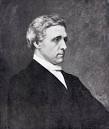
Charles L. Dodgson |
Charles L. Dodgson (mathematics) Charles L. Dodgson publishes the first part of Symbolic Logic. |
|
30 Nov 1895
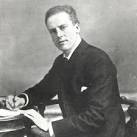
Karl Pearson |
Karl Pearson (mathematics) Karl Pearson publishes significant contributions to correlation and regression. |
|
30 Nov 1895

Ernest Duchesne |
Ernest Duchesne (microbiology) Ernest Duchesne discovers the antibiotic properties of penicillin as part of his doctoral research, but this is not followed up at this time. |
|
30 Nov 1895
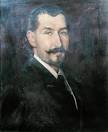
Antoine Marfan |
Antoine Marfan (physiology and medic) Antoine Marfan first describes the symptoms of Marfan syndrome. |
|
30 Nov 1895

sphygmomanometer |
sphygmomanometer (physiology and medic) An improved sphygmomanometer, for the measurement of blood pressure, is described by Scipione Riva-Rocci. |
|
30 Nov 1895
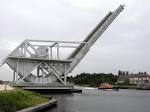
rolling bascule bridge |
rolling bascule bridge (technology) Thomas Ellis Brown produces an innovative design of rolling bascule bridge for Brooklyn. |
|
30 Nov 1895

Jesse W. Reno |
Jesse W. Reno (technology) Jesse W. Reno produces the first working escalator ("inclined elevator"), installed at Coney Island, Brooklyn. |
|
30 Nov 1895
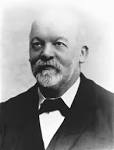
Gottlieb Daimler |
Gottlieb Daimler (technology) Gottlieb Daimler produces the first truck. |
|
30 Nov 1895

Neville Bertie-Clay |
Neville Bertie-Clay (technology) Captain Neville Bertie-Clay, Superintendent of the British Army arsenal at Dum Dum in Bengal, invents an expanding bullet. |
|
30 Nov 1895
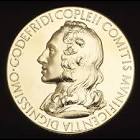
Copley Medal |
Copley Medal (awards) Copley Medal: Karl Gegenbaur |
|
30 Nov 1895
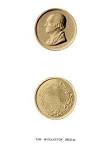
Wollaston Medal for geology |
Wollaston Medal for geology (awards) Wollaston Medal for geology: Eduard Suess |
|
30 Nov 1895
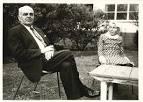
Priscilla Fairfield Bok |
birth Priscilla Fairfield Bok Priscilla Fairfield Bok (died 1975), American astronomer. |
|
03 Jan 1896

Jay Laurence Lush |
birth Jay Laurence Lush Jay Laurence Lush (died 1982), American livestock geneticist. |
|
23 Jan 1896
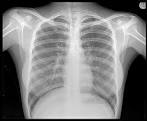
X-rays |
X-rays In 1896, Wilhelm Röntgen first made a public lecture-demonstration of his X-ray device, in Würzburg, Germany. |
|
02 Feb 1896

Kazimierz Kuratowski |
birth Kazimierz Kuratowski Kazimierz Kuratowski (died 1980), Polish mathematician. |
|
14 Feb 1896

Arthur Milne |
birth Arthur Milne Arthur Milne (died 1950), English space physicist. |
|
23 Feb 1896

Tootsie Roll |
Tootsie Roll In 1896, the Tootsie Roll was introduced by Austrian immigrant Leo Hirshfield to the U.S. In a small store in New York City, he began producing his a chocolaty, chewy candy, which he named after a nickname of "Tootsie" for his five-year-old daughter, Clara. He was America's first candy maker to individually wrap penny candy. By 1905, production moved to a four-story factory in New York. During World War II, Tootsie Rolls were added to American soldiers' rations because of their ability to withstand severe weather conditions and give quick energy. Tootsie Rolls are made from a base of sugar, corn syrup, soy-bean oil, skim milk and cocoa. Current production is over 49 million pieces a day. |
|
28 Feb 1896

Philip Showalter Hench |
birth Philip Showalter Hench Born 28 Feb 1896; died 30 Mar 1965 at age 69. American physician who was one of the leaders in American rheumatology. He shared the Nobel Prize for Physiology or Medicine in 1950 for discoveries relating to the hormones of the adrenal cortex, their structure and biological effects (with Edward C. Kendall and Tadeus Reichstein of Switzerland). In 1948, Hench was working at the Mayo Clinic, Rochester, Minnesota. He noticed that during pregnancy and in the presence of jaundice the severe pain of arthritis may decrease and even disappear. With Kendall, he successfully applied an adrenal hormone (later known as cortisone) in the treatment of rheumatoid arthritis. |
|
01 Mar 1896

French |
French (physics) French physicist Henri Becquerel discovers the principle of radioactive decay when he exposes photographic plates to uranium. |
|
29 Mar 1896

Wilhelm Ackermann |
birth Wilhelm Ackermann Wilhelm Ackermann (died 1962), German mathematician. |
|
31 Mar 1896

Hookless fastener |
Hookless fastener In 1896, the first U.S. patent for a hookless fastener based on a slider was issued to Whitcomb L. Judsen of Chicago Illinois (No. 557,207). It was designed for fastening shoes, whereby two metal chains were fastened together by the movement of a slider. He held a previous patent (No. 504,038 issued 29 Aug 1893) for a hookless fastening design for shoes, which used a clasp locker and unlocker. |
|
12 Apr 1896

Karl Humann |
death Karl Humann Died 12 Apr 1896 at age 57 (born 4 Jan 1839). German engineer and archaeologist whose excavation of the ancient Greek city of Pergamum (now Bergama, Tur.) brought to light some of the choicest examples of Hellenistic sculpture and revealed much about Hellenistic city planning. He also excavated the Greek city of Magnesia, another ancient city located in modern Turkey. |
|
25 Apr 1896

Pavel Sergeevich Aleksandrov |
birth Pavel Sergeevich Aleksandrov Born 25 Apr 1896; died 16 Nov 1982 at age 86. Soviet mathematician who made important contributions to the field of topology (the study of related physical or abstract elements that remain unchanged under certain distortions) and one of the founders of the theory of compact and bicompact spaces. Aleksandrov introduced many of the basic concepts of topology, such as the notion that an arbitrarily general topological space can be approximated to an arbitrary degree of accuracy by simple geometric figures such as polyhedrons. Giving support to international cooperation, he supervised the publication of an English-Russian dictionary of mathematical terminology (1962). |
|
19 May 1896

Carborundum furnace |
Carborundum furnace In 1896, Edward G. Acheson was issued a U.S. patent for an electric furnace used to produce carborundum (silicon carbide), one of the hardest industrial substances (No. 560,291). The furnace used an electric current passed through a core of carbon rods to produce a strong heating effect resulting from their resistance. |
|
29 May 1896

Gabriel-Auguste Daubrée |
death Gabriel-Auguste Daubrée Died 29 May 1896 at age 81 (born 25 Jun 1814). French geochemist and a pioneer in the application of experimental methods to the study of diverse geologic phenomena. His appointment as professor of geology and mineralogy at Strasburg furnished him with a laboratory suitable for his experimental work in synthetic geology, begun in 1849. He studied the artificial production of minerals, the geological action of superheated aqueous vapour, the effect of mutual abrasion, the influence of pressure and strain in mountain-making, etc. During the years 1857-61 he made a detailed study of the hot springs of Plombières, observing at the same time the chemical action of thermal waters. Daubréelite (CrS), a grayish granular mineral found in meteoric iron, was named after him. |
|
01 Jun 1896
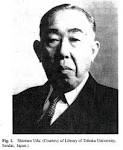
Shintaro Uda |
birth Shintaro Uda Shintaro Uda (died 1976), Japanese electrical engineer. |
|
15 Jun 1896

1896 Sanriku earthquake |
1896 Sanriku earthquake (earth sciences) The 1896 Sanriku earthquake of 7.2 surface wave magnitude and tsunami in Japan kill 27,000. |
|
23 Jun 1896

Joseph Prestwich |
death Joseph Prestwich Joseph Prestwich (born 1812), English geologist. |
|
13 Jul 1896
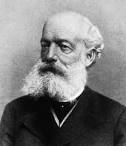
August Kekulé |
death August Kekulé Died 13 Jul 1896 at age 66 (born 7 Sep 1829). Friedrich August Kekulé von Stradonitz was a German chemist who devised the ring structure of carbon atoms in organic molecules. Although at first intending to study as an architect, his career in chemistry began after hearing Justus Liebig's lectures. He determined the tetravalence of carbon, and its ability to link in chains and form polyvalent radicals (1857-58). Further, he envisioned double or even triple bonds between carbon atoms in those chains, and isomers being molecules with the same atoms arranged differently. From a vision of a serpent catching its own tail, Kekulé realized that benzene has a ring structure (1863). Kekulé's ideas became the foundation of structural theory in organic chemistry. |
|
13 Jul 1896

Friedrich August Kekulé von Stradonitz |
death Friedrich August Kekulé von Stradonitz Friedrich August Kekulé von Stradonitz (born 1829), organic chemist. |
|
16 Jul 1896

Otmar von Verschuer |
birth Otmar von Verschuer Otmar von Verschuer (died 1969), German eugenicist. |
|
01 Aug 1896

Nansen's Fram expedition |
Nansen's Fram expedition (exploration) Conclusion of Nansen's Fram expedition. |
|
10 Aug 1896

Otto Lilienthal |
death Otto Lilienthal Died 10 Aug 1896 at age 48 (born 23 May 1848). German aeronautical engineer and inventor whose pioneering studies formed a foundation for Octave Chanute and the brothers Wilbur and Orville Wright. His prior inventions, such as a small steam engine that worked on a system of tubular boilers designed for safety, brought him financial success. In 1891, he built and flew in the Derwitzer Glider. Within the next five years (before he died in a crash), assisted by his brother, Gustav, he designed other gliders and made 2000 flights. He carefully studied the aerodynamics of rigid wings, inspired by the gliding flight of storks made without flapping their wings. Although his aircraft achieved only low speed and altitudes, and he had survived other crashes, he broke his spine and died the day following a crash, falling from about 56-feet. |
|
15 Aug 1896

Sheldon Glueck |
birth Sheldon Glueck Born 15 Aug 1896; died 10 Mar 1980 at age 83. Sol Sheldon Glueck and his wife Eleanor were an American criminologists and researchers at Harvard Law School, a husband-and-wife team whose numerous studies of criminal behaviour and of the results of correctional treatment profoundly influenced criminal justice, both legislatively and administratively. In 1940 the Gluecks began work on their best-known study, Unraveling Juvenile Delinquency (1950). This ten-year project addressed the development of criminal careers and involved a detailed examination of 500 delinquents and 500 nondelinquents from disadvantaged neighborhoods in the Boston area. Then, for the next fifteen years, the Gluecks conducted an extensive follow-up of the original sample. |
|
15 Aug 1896

Gerty Cori |
birth Gerty Cori Born 15 Aug 1896; died 26 Oct 1957 at age 61. Gerty Theresa Radnitz Cori was a Czech-American biochemist who met her husband Carl Ferdinand Cori while attending medical school in Prague (married 1920). They decided upon careers in medical research, took positions in America in 1922, and became U.S. citizens in 1928. They both shared the 1947 Nobel Prize in Physiology or Medicine (with Bernardo Houssay). The Coris were recognized "for their discovery of the course of the catalytic conversion of glycogen." After Marie Curie and Irène Joliot-Curie, Gerty was the female Nobelist in science. |
|
18 Sep 1896
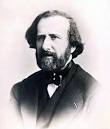
Hippolyte Fizeau |
death Hippolyte Fizeau Hippolyte Fizeau (born 1819), physicist. |
|
23 Sep 1896

Sir John Eric Erichsen |
death Sir John Eric Erichsen Died 23 Sep 1896 at age 78 (born 19 Jul 1818). Danish-British surgeon. |
|
21 Oct 1896
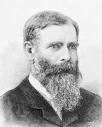
James Henry Greathead |
death James Henry Greathead James Henry Greathead (born 1844), British civil engineer. |
|
27 Oct 1896

H. Newell Martin |
death H. Newell Martin H. Newell Martin (born 1848), British physiologist. |
|
03 Nov 1896
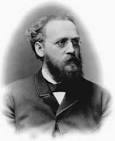
Eugen Baumann |
death Eugen Baumann Eugen Baumann (born 1846), chemist. |
|
22 Nov 1896
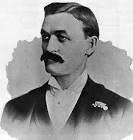
George Washington Gale Ferris, Jr. |
death George Washington Gale Ferris, Jr. George Washington Gale Ferris, Jr. (born 1859), American civil engineer. |
|
05 Dec 1896

Carl Cori |
birth Carl Cori Born 5 Dec 1896; died 20 Oct 1984 at age 87. Carl Ferdinand Cori was an American biochemist who, teamed with his wife Gerty Cori, discovered a phosphate-containing form of the simple sugar glucose, and its universal importance to carbohydrate metabolism, led to an understanding of hormonal influence on the interconversion of sugars and starches in the animal organism. Their discoveries earned them (with Bernardo Houssay) the Nobel Prize for Medicine or Physiology in 1947. |
|
08 Dec 1896

Lemon Squeezer |
Lemon Squeezer In 1896, a patent for an improvement in a Lemon Squeezer was issued to the Black-American inventor J.T. White (U.S. No. 572,849). It made squeezing lemons and straining the juice easy and also kept hands clean while juicing. |
|
08 Dec 1896
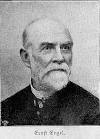
Ernst Engel |
death Ernst Engel Died 8 Dec 1896 at age 75 (born 26 Mar 1821). German statistician, the head of the Prussian Statistical Bureau (1860-82), known for the "Engel curve," or Engel's law, which states that the proportion of expenditure on food will fall as income rises, i.e. food is a necessary good. Engel's law applies to goods as a whole. Demand for food, clothing and shelter - and for most manufactured products - doesn't keep pace with increases in incomes. Engel curves are useful for separating the effect of income on demand from the effects of changes in relative prices. Engel also examined the relationship between the size of the Prussian rye harvest and the average price of rye over a number of years prior to 1860, probably the first empirical study of the relationship between price and supply. |
|
10 Dec 1896

Alfred Nobel |
death Alfred Nobel Alfred Nobel (born 1833), inventor. |
|
11 Dec 1896

William Preece |
William Preece (technology) William Preece introduces Guglielmo Marconi's work in wireless telegraphy to the general public at a lecture, "Telegraphy without Wires", at the Toynbee Hall in London. |
|
12 Dec 1896
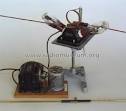
Radio demonstration |
Radio demonstration In 1896, Guglielmo Marconi gave the first public demonstration of his radio equipment at Toynbee Hall, East London. He was introduced by William Preece, chief electrician of the British Post Office. Preece saw the value of wireless telegraphy to replace the existing post office wire service. The use of the hall had been arranged by Preece, who advertised the event, drawing a considerable audience, and the press. While Marconi tapped the key on the transmitter, Preece carried the receiver box around the room showing that there were no wires yet a bell in the receiver rang each time Marconi closed the key. Through his mother's British society connections, Marconi had met Preece and benefitted from his patronage. |
|
29 Dec 1896
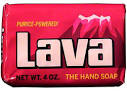
Lava soap trademarked |
Lava soap trademarked In 1896, "Lava" soap was trademarked by William Waltke & Co. of St. Louis, Missouri. |